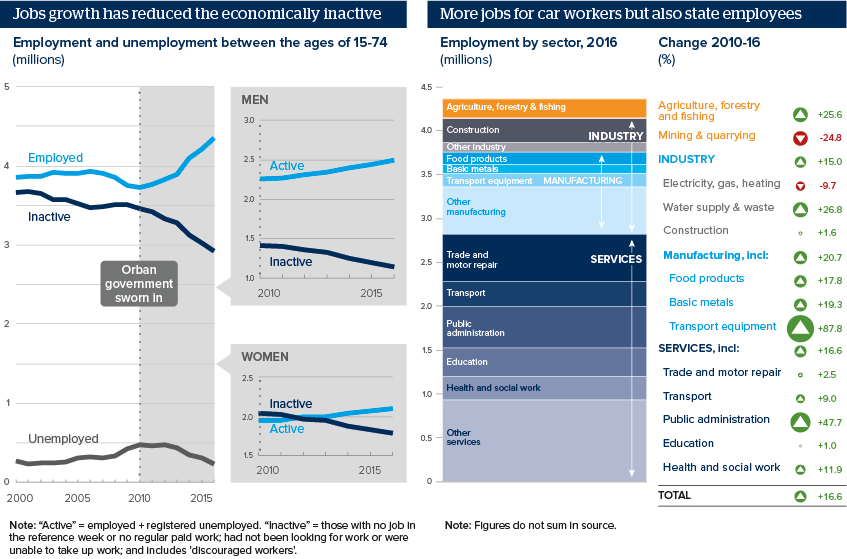Jobs look like Hungarian governing party success story
More Hungarians have been brought into the work force but the reserves are nearly used up requiring a new labour policy
Source: Hungarian Central Statistical Office (KSH)
Outlook
Hungary’s fall in unemployment, from 11.8% in Q1 2010, to 3.8% in Q4 2017, is spectacular and unrivalled in the region: Poland’s corresponding figures are 10.6% and 6.8% (Q3 2017). However, it is partly due to a ‘community work programme’ that has taken some 200,000 out of long-term unemployment, without guaranteeing that they are being prepared for today’s job market. With a shrinking population, policy has helped working mothers, increasing the female participation rate.
Employment growth has squeezed both the registered unemployed and the economically inactive. With immigration limited either politically to ‘Europeans’ or practically to the Hungarian-speaking communities in poorer neighbouring countries, the current labour shortage at all levels, skilled, semi-skilled and unskilled, can only become more acute.
Impacts
- The government’s record on employment should work to its advantage in the April elections.
- However, skills shortages may eventually constrain GDP growth with manufacturers turning to automation and robots.
- The government may have to tackle attuning the education system more to market demands.
See also
- Hungarian economy will face post-election challenges - Mar 23, 2018
- Hungarian economic stimulus measures will leave gaps - Dec 21, 2016
- More graphic analysis
